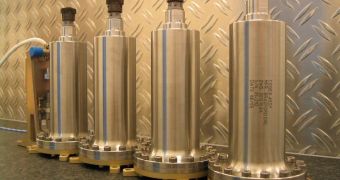The Proba-2 technology demonstrator microsatellite achieved another important milestone in its mission earlier this month, when it managed to replenish its fuel tank from onboard solid gas reserves.
This spacecraft is the latest to be launched by the European Space Agency (ESA) as part of its Project for Onboard Autonomy series of satellites. The goal of this large-scale endeavor is to use small spacecraft to demonstrate new technologies.
Launched on November 2, 2009, Proba-2 is less than one cubic meter in volume, but manages to carry no less then 17 technology demonstrators and 4 scientific payloads. The latter are dedicated to studying the Sun and the space weather patterns it triggers.
ESA sent a series of commands to activate the refueling demonstrator from its Belgium-based Redu ground station on August 16. What the instrument does is repressurize the fuel tank with nitrogen gas produced from a special, solid material at room temperature.
This satellite is powered by an unusual “resistojet” engine that runs on xenon gas. Thrust is achieved by heating the gas before allowing it to escape through the nozzle. By adding nitrogen to the fuel tank, ESA was able to bring pressure levels inside the tank to levels similar to those recorded at launch.
“What makes this repressurization unique is that the added gas was not stored in a pressurized state but produced from a solid material at room temperature, the first of four ‘cool-gas generators’ on Proba-2,” expert Laurens van Vliet explains.
“Nitrogen, like xenon, is an inert, non-reactive gas, so the resistojet can work just as well with a xenon–nitrogen mixture,” adds the scientist, who is based at the Dutch research organization TNO. The latter was responsible for developing the new technology.
What is so remarkable about the cool-gas generators is that they are filled with a special rigid material that only produces nitrogen gas when activated by a special mechanism. Once this happens, the material produces 250 times its own volume in pure nitrogen gas.
“The generators are a huge step forward because they can be stored without pressure with no danger of leaking, and require no maintenance. Proba’s generators had not been touched in six years,” TNO science team member Berry Sanders goes on to say.
“This is very different to standard systems with gas under pressure, which are much more complex and need regular checking and maintenance,” he explains further.

 14 DAY TRIAL //
14 DAY TRIAL //